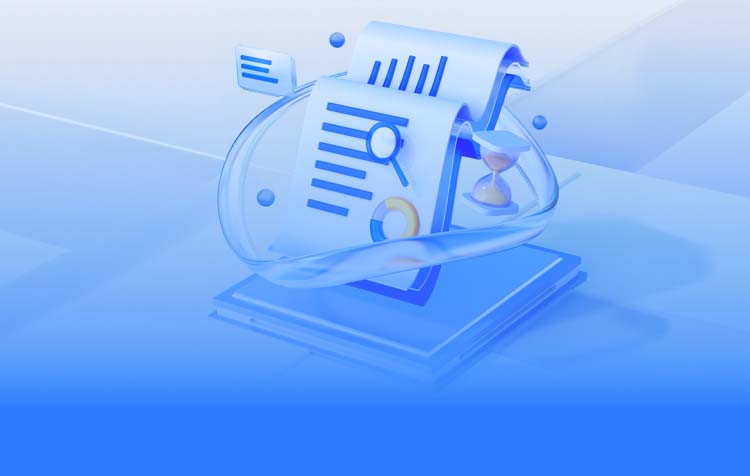解锁软件管理新篇章,Allegro许可证使用规定全解
软件: ALLEGRO
Alleviating Compliance Risks and Enhancing Efficiency through Allegro License Management: A Guide for Enterprise Software Users
Introduction
In the realm of digital economics, the role of software has become indispensable to a company's operational landscape, underpinning everything from productivity to customer engagement. However, the technology’s omnipresence has simultaneously introduced a complex tapestry of compliance issues. Allegro, a marketleading authority in software solutions, offers comprehensive guidelines and policies to ensure not only the compliance and efficiency of software use, but also the safeguarding of businesses from potential legal and financial risks. This paper delves into the Allegro License usage regulations, equipping enterprises with a deeper understanding of the compliance framework, minimizing vulnerabilities, and boosting operational efficiency.
Allegro License Usage Regulations Overview
The Allegro License usage regulations are a meticulously crafted set of guidelines designed to facilitate the correct and lawful use of software resources. These regulations encompass aspects such as activation processes, permissible usage, constraints, and the management of violations. Adhering to these regulations not only maximizes the benefits that software brings but also mitigates potential legal threats and associated costs.
Activation and Compliance Requirements

Activation Codes and Secrets: After acquiring a Allegro License, enterprises must utilize activation codes and secrets to activate the license effectively. These codes serve as crucial proof of ownership, necessitating their妥善保管.
Software Version and License Compatibility: It is imperative for businesses to ensure that the software version in use is identical to that specified in the license, avoiding any legal inaccuracies due to version mismatches.
Regular Updates, Reblings, and Licensing Compliance: Businesses must adhere to the temporal guidelines set forth by the license for updates and renewals, ensuring an uninterrupted and compliant software utilization span.
Usage Constraints
Device Limitation:acky in line with license types, software is restricted to usage on designated devices only, deterring from unauthorized machine presence.
Function Limitations: Acknowledging the potential restrictions on software functionalities outlined in the license, businesses should operate within these parameters to avoid any legal implications.
Parallel User Limitations: For multiuser licenses, businesses must respect the prescribed user limits to prevent unauthorized or excessive usage.
Legal Consequences and Mitigation
Identification of Offenses: Regular scrutiny of software usage is encouraged to promptly address any noncompliance, such as unauthorized duplication, distribution, or transfer, emphasizing the prevention of potential legal fallout.
Legal Accountability: Violations of the Allegro License usage rules carry significant legal implications, including fines, compensation, and damage to business reputation, necessitating proactive adherence to compliance.
Best Practices and Collaboration
Establish Comprehensive Licensing Policies: Businesses should institute robust licensing policies, clearly defining the usage norms and responsibilities across departments.
Regular Training and Outreach: Training programs and awareness campaigns should be conducted to foster a high level of compliance consciousness among employees and reduce the risk of accidental noncompliance.
Frequent Communication and Expert Guidance: Collaboration with Allegro for the latest updates on compliance requirements and expert advice ensures proactive adjustments to operational practices.
Periodic Audits and Monitoring: Implementing routine audits of software usage and continuous monitoring not only ensures legal compliance but also acts as a preventative measure against potential noncompliance.
Leveraging Technology for Optimization
The multifaceted approach to managing software licensing entails leveraging cuttingedge tools like the G arbitration license optimization system, offering a strategic framework to:
License Analysis: This component provides a comprehensive overview of service, module, user, and machinerelated software license information, aiding in the accurate tally of license utilization.
Optimization Strategies: Identifying and recouping idle licenses, thus optimizing resource allocation, is neatly integrated into the system. Through finegrained adjustments in permission, distribution, and reservation, overall software access can be orchestrated efficiently, reducing unnecessary procurement.
Conclusion
Through the detailed adherence to Allegro License usage regulations, businesses can notably reduce the risk of legal complications, enhance operational efficiency, and consolidate their stance in the realm of elite manufacturing enterprises. This strategic approach not only ensures a smooth course through the labyrinth of digital compliance but also paves the way for sustainable growth and innovation.
Introduction
In the realm of digital economics, the role of software has become indispensable to a company's operational landscape, underpinning everything from productivity to customer engagement. However, the technology’s omnipresence has simultaneously introduced a complex tapestry of compliance issues. Allegro, a marketleading authority in software solutions, offers comprehensive guidelines and policies to ensure not only the compliance and efficiency of software use, but also the safeguarding of businesses from potential legal and financial risks. This paper delves into the Allegro License usage regulations, equipping enterprises with a deeper understanding of the compliance framework, minimizing vulnerabilities, and boosting operational efficiency.
Allegro License Usage Regulations Overview
The Allegro License usage regulations are a meticulously crafted set of guidelines designed to facilitate the correct and lawful use of software resources. These regulations encompass aspects such as activation processes, permissible usage, constraints, and the management of violations. Adhering to these regulations not only maximizes the benefits that software brings but also mitigates potential legal threats and associated costs.
Activation and Compliance Requirements

Activation Codes and Secrets: After acquiring a Allegro License, enterprises must utilize activation codes and secrets to activate the license effectively. These codes serve as crucial proof of ownership, necessitating their妥善保管.
Software Version and License Compatibility: It is imperative for businesses to ensure that the software version in use is identical to that specified in the license, avoiding any legal inaccuracies due to version mismatches.
Regular Updates, Reblings, and Licensing Compliance: Businesses must adhere to the temporal guidelines set forth by the license for updates and renewals, ensuring an uninterrupted and compliant software utilization span.
Usage Constraints
Device Limitation:acky in line with license types, software is restricted to usage on designated devices only, deterring from unauthorized machine presence.
Function Limitations: Acknowledging the potential restrictions on software functionalities outlined in the license, businesses should operate within these parameters to avoid any legal implications.
Parallel User Limitations: For multiuser licenses, businesses must respect the prescribed user limits to prevent unauthorized or excessive usage.
Legal Consequences and Mitigation
Identification of Offenses: Regular scrutiny of software usage is encouraged to promptly address any noncompliance, such as unauthorized duplication, distribution, or transfer, emphasizing the prevention of potential legal fallout.
Legal Accountability: Violations of the Allegro License usage rules carry significant legal implications, including fines, compensation, and damage to business reputation, necessitating proactive adherence to compliance.
Best Practices and Collaboration
Establish Comprehensive Licensing Policies: Businesses should institute robust licensing policies, clearly defining the usage norms and responsibilities across departments.
Regular Training and Outreach: Training programs and awareness campaigns should be conducted to foster a high level of compliance consciousness among employees and reduce the risk of accidental noncompliance.
Frequent Communication and Expert Guidance: Collaboration with Allegro for the latest updates on compliance requirements and expert advice ensures proactive adjustments to operational practices.
Periodic Audits and Monitoring: Implementing routine audits of software usage and continuous monitoring not only ensures legal compliance but also acts as a preventative measure against potential noncompliance.
Leveraging Technology for Optimization
The multifaceted approach to managing software licensing entails leveraging cuttingedge tools like the G arbitration license optimization system, offering a strategic framework to:
License Analysis: This component provides a comprehensive overview of service, module, user, and machinerelated software license information, aiding in the accurate tally of license utilization.
Optimization Strategies: Identifying and recouping idle licenses, thus optimizing resource allocation, is neatly integrated into the system. Through finegrained adjustments in permission, distribution, and reservation, overall software access can be orchestrated efficiently, reducing unnecessary procurement.
Conclusion
Through the detailed adherence to Allegro License usage regulations, businesses can notably reduce the risk of legal complications, enhance operational efficiency, and consolidate their stance in the realm of elite manufacturing enterprises. This strategic approach not only ensures a smooth course through the labyrinth of digital compliance but also paves the way for sustainable growth and innovation.











